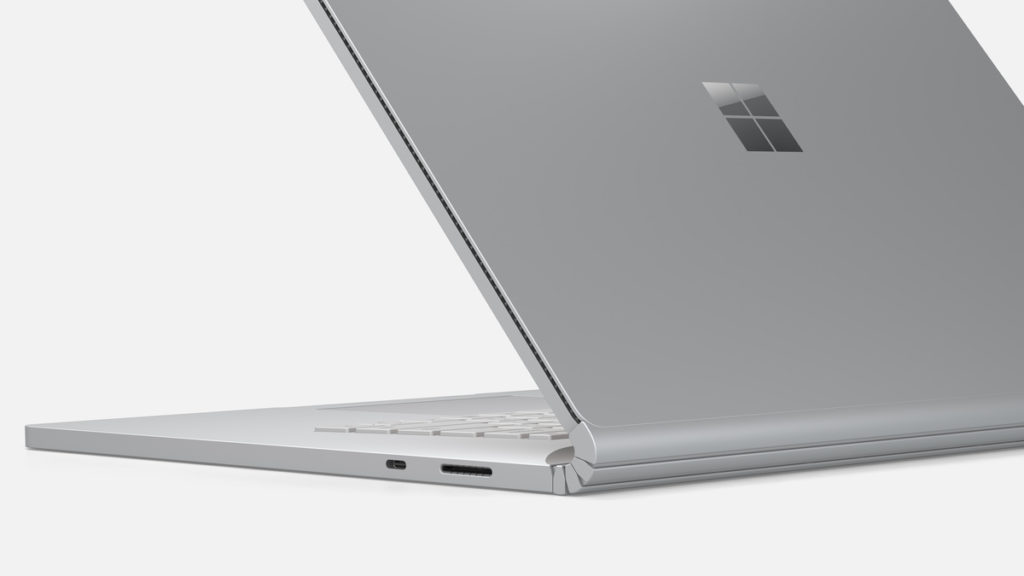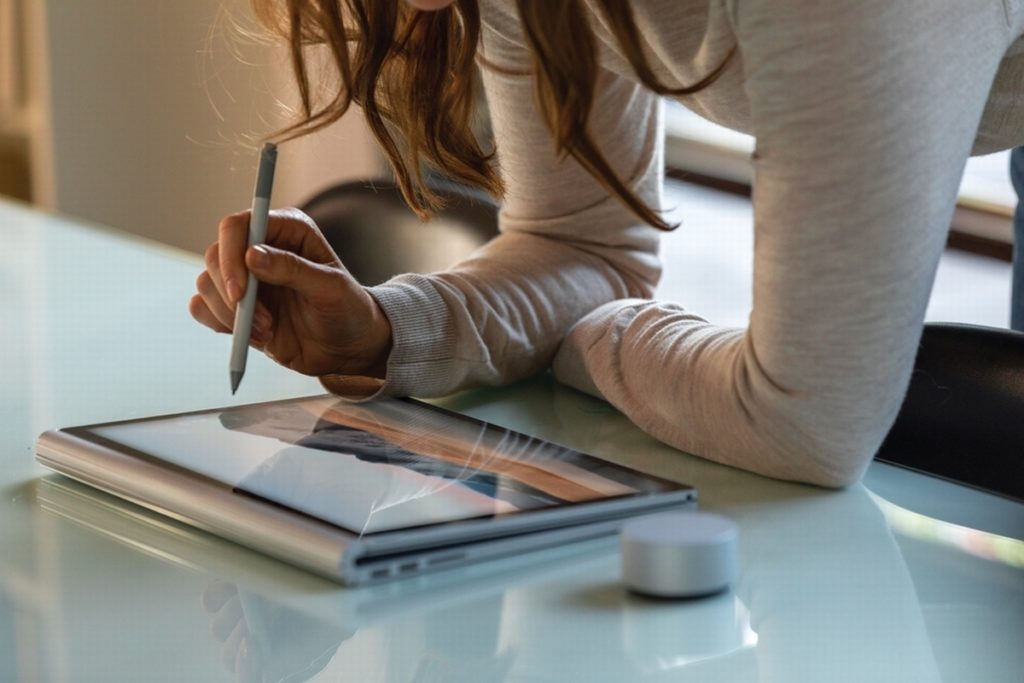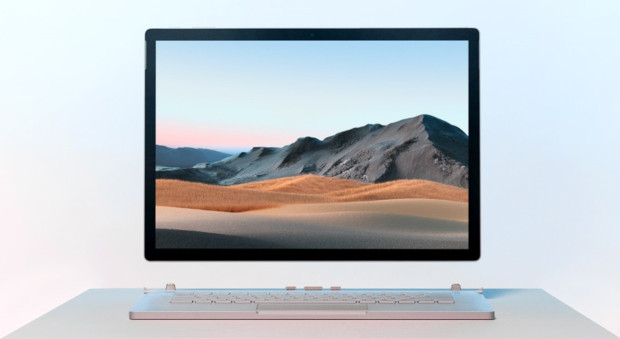It took me a while to warm to Microsoft’s Surface devices. The first generation Surface RT using 32-bit ARM processors was a flop that, coupled with the disastrous acquisition of Nokia’s devices business, was largely responsible for the end of Steve Ballmer’s tenure as CEO.
The Surface Pro, however, delivered a full fat Windows 8 experience in a package that was neither a productivity or content consumption powerhouse. However, I am happy to say that my first generation Surface Pro is alive, well and still in regular use thanks to a Windows 10 upgrade. The Surface’s real ‘a-ha’ moment came in the form of the Pro 3, a slim device that was big enough to work off with or without a keyboard. It was hard to say goodbye to my review model.

I had a similar moment with the first generation Surface Book convertible. Microsoft had set itself the task of creating the ‘ultimate laptop’ and looked like actually doing it. The Surface Book’s magnesium finish stood out on the shelves and looked a credible alternative to its real competition: Apple’s MacBook Pro. Alas, I had to admire The Surface Book from a distance but getting my hands on a third generation model gave me hope that in the same way it took three iterations to get the Surface Pro right any flaws from the previous generations of Surface Book would also have been addressed and indeed this would live up to the hype and the price tag.
So who is the ultimate laptop for? It’s either a mass appeal machine for a small number of affluent users or a premium hybrid PC capable of being all things to all people.
Specs
The review model I worked with came with a 3240×2160 display (at 260 ppi); 16Gb RAM; Quad core 10th-gen Intel Core i7-1065G7 Ice Lake processor; an Nvidia GeForce GTX 1660 Ti GPU with Max-Q Design and 6Gb GDDR6 graphics memory; and a 256Gb SSD. According to Microsoft the Surface Book 3 has its “fastest SSD ever” in the 1Tb and 2Tb SSD models – . a claim we couildn’t verify but that Redmond is happy to make.
I/O comes courtesy of single USB-A and USB-C ports, two Surface Connect ports capable of running 2 4K displays, a 3.5mm headphone jack, and a full Size SDXC card reader. It’s also compatible with the Surface Dial (which we didn’t get to try) and the Surface Pen, which deserves a review of its own but suffice to say its magnetic attachment and ‘springy’ nib are excellent.

The first thing I wanted to get to grips with was that iconic Surface Book coiled hinge. Here it performs two functions: protecting the screen from friction scratches from the keyboard and, more importantly, exposes the base’s heat pipes.
The ‘muscle wire’ hinge lock is strong enough that there is no give in laptop mode until the user pushes a dedicated release button that pops the tablet out of the mounting. It takes about a second to detach but the novelty makes it worth the ever-so-brief wait.
Once removed, the tablet can either be used alone or by reattaching ‘backwards’ so the whole unit can wrap around to be used as a more powerful tablet or the base base can be used as a kickstand, a nice touch for watching movies.
The Surface Book keyboard is a pleasure to use. The 1.5mm key travel matches comfort with accuracy. Touch typists will appreciate the action and it has three backlighting settings to suit your conditions.
The track pad is a bit of a mixed bag. Since Microsoft shared its precision track pad drivers with other manufacturers accuracy is no longer a unique selling point. What remains, a decent sized pad with space on both sides to rest your palms, might not be as attractive to consumers impressed with offerings from the likes of Dell that have decided to go with bigger pads with the same level of responsiveness.
Screentime
The display itself is just short of 4K resolution and has a 3:2 aspect ratio, which takes a bit of getting used to. This works fine for productivity applications in tablet mode but does draw attention to itself if you’re watching movies or playing games. On that front the screen performs well enough with its 16000:1 contrast ratio but without the deep blacks of its OLED competitors the Surface Book 3 is a little behind the curve. Also on the screen, the PixelSense technology gives 10 points of contact on the screen for manipulating objects in real time – the kind of the original Surface from 12 years ago showed off.
The 8MP rear-facing and 5MP front-facing cameras deliver super sharp 1080p HD images, a welcome addition for a time when video calling is the norm. Special mention goes to the integration of Windows Hello, the biometric login system that replaces passwords, pin codes and touch patterns in favour of a facial scan.

The Surface Book comes with two cooling systems, one in the tablet and the other in the base. Both sets of head pipes were quiet with regular use though they can get loud and breezy when under pressure. Microsoft apparently put a lot of thought into the current cooling system, going so far as to to use college students’ regular backpacks to test for overheating.
One recurrent criticism of the Surface Book has been power management, and this time Microsoft is claiming up to 17.5 hours of battery life when attached to the base. My colleagues in IDG managed 12 hours and it can charge to 50% in about an hour.
Final thoughts
So how does the Surface Book 3 stack up? Well, it probably has sorted out the problems of its predecessors at a technical level but where its tablet brethren moved on, the Surface Book has stood still. The Surface Book 3 looks exactly like the generations before it, which is disappointing. Microsoft had set itself a goal of having the ultimate premium laptop but got stuck in an engineering mindset, solving problems without paying more attention to design to bring the package together.
The Surface Book line still stands out from the competition but they don’t stand out from each other. Yes it works, but it works as well as many other, cheaper laptops on the market. If Microsoft set itself the target of taking down the MacBook Pro it hasn’t done it here. At €1,849 and €2,649 for the base 13″ and 15″ models respectively, they’re marginally less expensive than Apple’s MacBook Pro. But where Apple engages creatives and manages periodic design tweaks Microsoft has stood still, undercutting the Surface Book 3’s capabilities with a dated look.
The Surface Book 3 isn’t the ultimate laptop but with a lick of paint and a price cut a fourth generation would have a real shot at it.
Niall Kitson








Subscribers 0
Fans 0
Followers 0
Followers